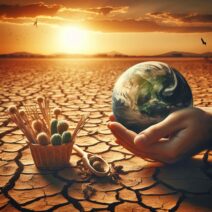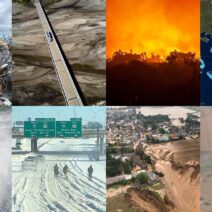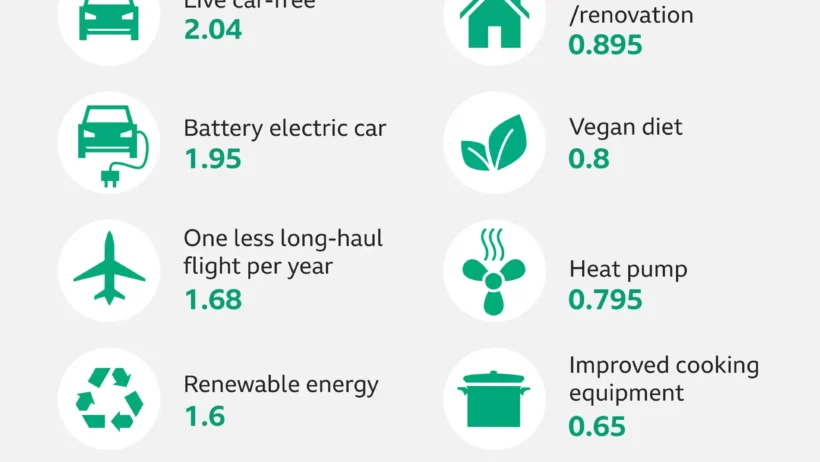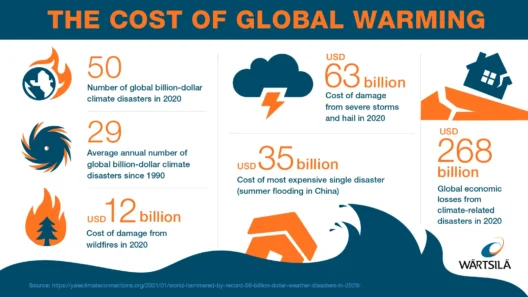As the specter of climate catastrophe looms ever closer, humanity stands at a pivotal juncture—a proverbial fork in the road. The choices we make today bear profound implications for generations to come. The dialogue surrounding climate change has shifted; it is no longer solely about the science but also about social responsibility and moral imperatives. Now is the time for an examination of actions that can avert the impending environmental turmoil.
The consensus among scientists is clear: the consequences of inaction could be catastrophic. Rising temperatures, melting ice caps, and increasingly erratic weather patterns are not mere predictions; they are harbingers of a reality that is unfolding before our eyes. However, the crux of the matter isn’t just acknowledging the crisis but rather formulating a robust strategy to mitigate it. This necessitates a shift in our collective perspective, moving from reactive measures to proactive empowerment.
The first step in this transformative journey is education. It is imperative that communities worldwide are armed with knowledge about the intricacies of climate change and its wide-ranging effects. Educational initiatives should transcend traditional boundaries, making climate literacy part of interdisciplinary curriculums that encompass science, economics, and ethics. Providing individuals, especially the youth, with the tools to understand and engage with climate science fosters a generation that can navigate these challenges with acumen.
Equally critical is the recognition that climate change does not affect all demographics equally. Marginalized communities often find themselves on the frontline, disproportionately impacted by environmental degradation. Initiatives must include social justice frameworks that acknowledge these inequities. By uplifting the voices of those most affected, we cultivate a comprehensive approach to climate action—one that considers the diverse fabric of society and fosters an inclusive dialogue. We have to move beyond a one-size-fits-all mentality towards nuanced strategies that cater specifically to various demographics.
Shifting gears from education, let’s delve into technology’s role in combating climate change. Innovation serves as a double-edged sword. While industrialization has been a major contributor to greenhouse gas emissions, technology can also catalyze sustainability. Renewable energy sources such as wind, solar, and geothermal are not merely viable alternatives; they are becoming increasingly essential. Investing in clean technology not only curtails carbon emissions but also stimulates economic growth. Creating jobs in these sectors can spur broader societal shifts towards sustainable practices, illustrating that a green economy can flourish alongside traditional industries.
However, the pivot towards sustainable practices demands systemic change. Governments must enact policies that incentivize reductions in carbon footprints, making it economically viable for corporations and individuals alike to embrace green alternatives. This could take the form of subsidies for renewable energy installations or tax breaks for enterprises committed to sustainability. Such regulatory frameworks would fundamentally alter market dynamics, encouraging innovation and climate-conscious business practices.
Moreover, corporate responsibility must evolve beyond perfunctory environmental pledges to substantive action plans. Businesses have the unique capacity to influence consumer behaviors. By prioritizing sustainability in their operations and supply chains, corporations can offer products and services that embody ecological integrity. This aligns with the rising demand from consumers for ethically sourced, eco-friendly goods—illustrating how commerce can be a fulcrum for environmental stewardship rather than exploitation.
Beyond policy and corporate accountability, individual action remains a linchpin in this equation. Often, individuals might feel overwhelmed, perceiving their efforts as insignificant in the grand scheme. Yet, collective action can wield substantial influence. Simple yet impactful lifestyle changes—such as reducing meat consumption, utilizing public transport, and minimizing plastic use—can multiply across communities, leading to meaningful reductions in overall carbon footprints. The essence of this movement lies in fostering a culture of sustainability where environmentally conscious choices are normalized and celebrated.
In addition to personal responsibilities, community engagement plays a vital role in the climate action sphere. Grassroots movements have historically sparked monumental shifts in societal paradigms. These organizations often serve as a bridge between scientific research and public engagement, fostering awareness campaigns that galvanize community action. Mobilizing local leaders and influencers can heighten the visibility of climate issues, drawing attention to both personal and collective responsibilities.
As the challenges of climate change amplify, the need for international cooperation becomes paramount. Climate change knows no borders; it is a global crisis demanding a unified response. The Paris Agreement, for instance, symbolizes a global effort to limit warming and holds nations accountable to their commitments. However, it requires countries to transcend national interests in favor of a communal cause. This means tempering industrial ambitions with environmental stewardship, a delicate balance that necessitates global solidarity.
In summation, the fork in the road underscores a profound truth: the future of our planet hinges upon the decisions we make today. By integrating education, technological innovation, systemic change, corporate accountability, individual actions, community engagement, and international cooperation, humanity can steer towards a more sustainable trajectory. Avoiding climate catastrophe is not merely an ecological imperative; it is a moral obligation to preserve our Earth for future generations. In this fight, every effort counts, and a collective will to act can change the narrative from one of despair to one of hope.





